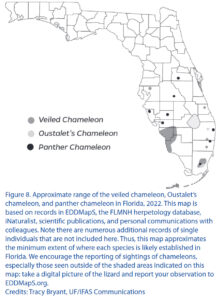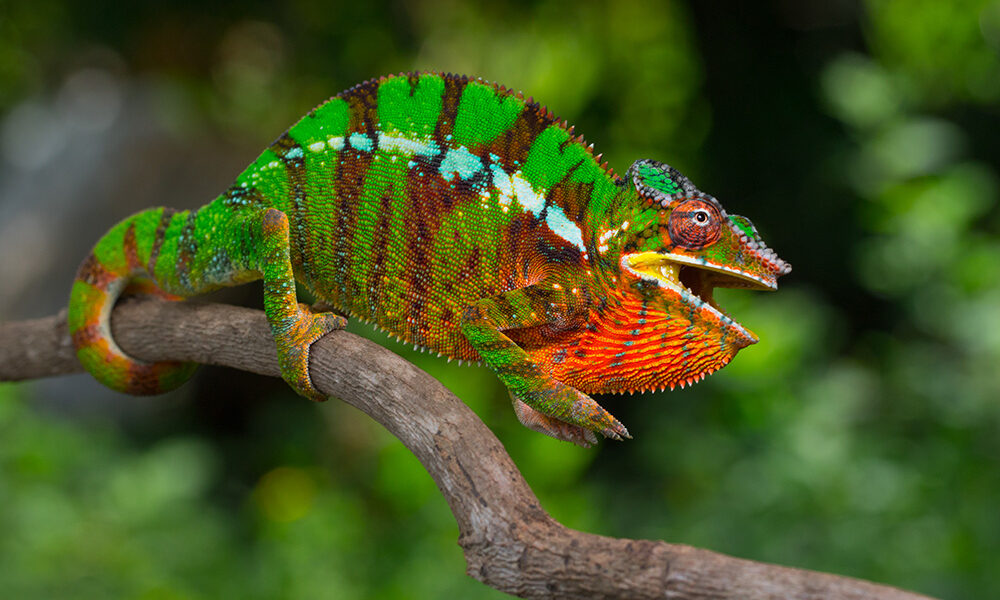Introduced chameleons in Florida
The “Sunshine State” Florida in the southeast of the USA has long been known for a variety of introduced reptiles. Students at the University of Florida recently published a small brochure on the current status of chameleon species introduced there.
As early as the late 1800s, a non-native reptile was documented to have found its way to Florida by ship: an anole. Since then, some 150 introduced species have been documented in the US state, including eight species of chameleons. Three of them are now spread over the entire southern half of the peninsula and even reproduce: the Yemen chameleon Chamaeleo calyptratus, the Malagasy Giant chameleon Furcifer oustaleti, and the panther chameleon Furcifer pardalis.

All three species are thought to have come into the country with increasing pet trade and private keeping of chameleons. Furcifer oustaleti has been in Florida since at least the year 2000. At that time, the first findings became known in an avocado plantation located in the immediate vicinity of the buildings of a former importer in Miami – Dade County. Chamaeleo calyptratus was first recorded in Fort Myers on a vacant lot only a little later, in 2002. Furcifer pardalis followed in 2008.
The question of whether any of the three species mentioned should be considered invasive is difficult to answer so far due to a lack of data. A species is considered invasive if it is non-native, has been introduced by humans, and has been proven to cause damage to native flora and fauna. The last point, however, is debatable. While Jackson’s chameleons in Hawaii have been shown to consume endangered native snail species, among others, the same is not yet known from Florida. There, the animals are currently considered more of a nuisance, but with the potential to threaten the native invertebrate fauna.
The problem is that chameleons are still being released – sometimes they escape unintentionally, but sometimes they are deliberately released in order to collect and sell the offspring later. For the latter, you need a permit in Florida. Interesting to note: Anyone is allowed to kill introduced chameleons on their own property “in a humane way”. In some places, chameleons are already being collected to be sold to private owners.
The students call for observations of chameleons in Florida to be reported on the internet via IveGot1.org or via the app of the same name. So far, not all populations are known, as much information is only passed on by hand. Furthermore, they ask that chameleons that have become a nuisance should not be abandoned, but handed into the Exotic Pet Amnesty Program of the Florida Fish and Wildlife Conservation Commission. The surrender there is free of charge, and the EPAP is ultimately looking for new keepers for the animals.
Florida’s introduced reptiles: Veiled Chameleon (Chamaeleo calyptratus), Oustalet’s chameleon (Furcifer oustaleti), and panther chameleon (Furcifer pardalis)
Max Maddox, Karissa Beloyan, Natalie M. Claunch, Steve A. Johnson
Veröffentlichung des Wildlife Ecology and Conservation Department, Universität of Florida
DOI: 10.32473/edis-UW501-2022


